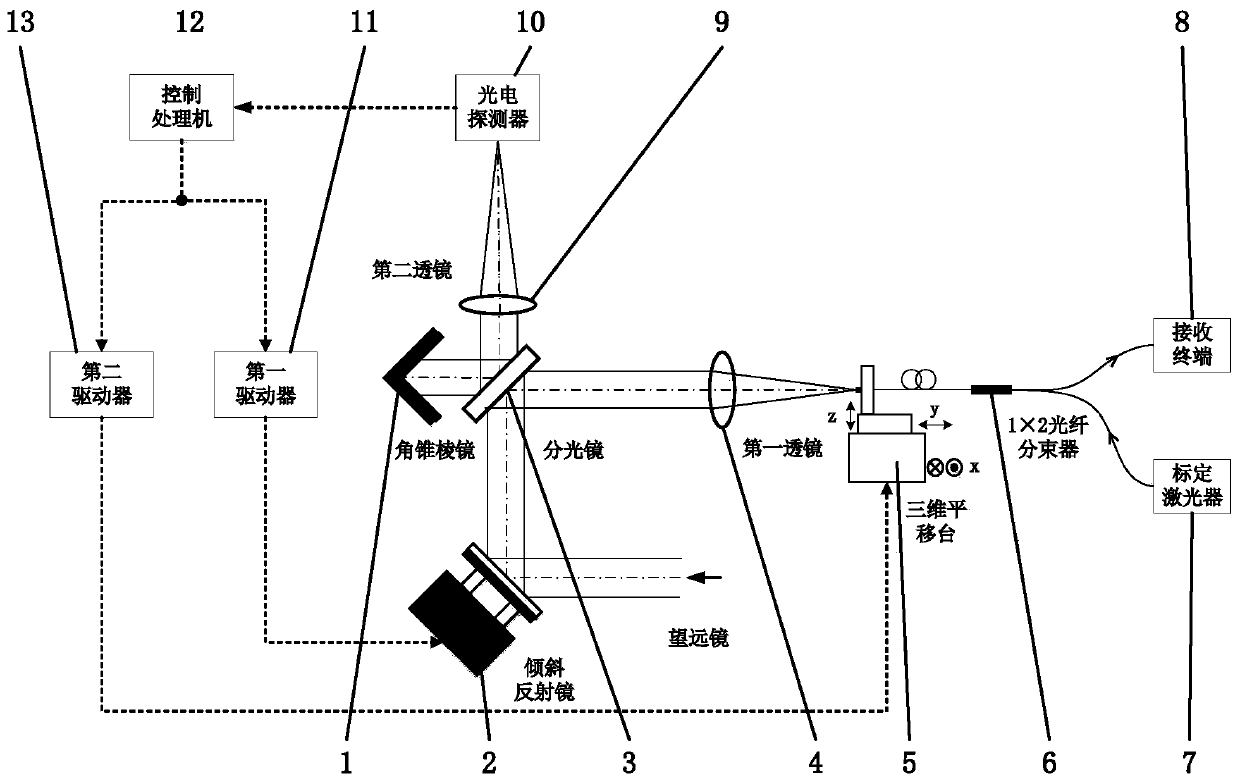A spatial light-to-fiber coupling system
A fiber coupling and spatial light technology, applied in the field of spatial light and fiber optics, can solve the problems of low bandwidth of SPGD algorithm, falling into local optimal solution, difficulty in initial alignment of optical axis, etc., to avoid axis offset and improve coupling efficiency , Reduce the effect of optical axis deviation
- Summary
- Abstract
- Description
- Claims
- Application Information
AI Technical Summary
Problems solved by technology
Method used
Image
Examples
Embodiment Construction
[0012] The present invention will be further described below in conjunction with the accompanying drawings and specific implementation examples, but the protection scope of the present invention should not be limited thereby.
[0013] Such as figure 1 As shown, a spatial light-to-fiber coupling system of the present invention includes a corner cube prism 1, an inclined mirror 2, a beam splitter 3, a first lens 4, a three-dimensional translation stage 5, a 1×2 fiber beam splitter 6, and a calibration laser 7. Receiving terminal 8, photodetector 10, second lens 9, first driver 11, control processor 12 and second driver 13. 1×2 optical fiber beam splitter 6 adopts mode field radius w 0 It is a 4.5μm single-mode polarization-maintaining fiber, and the energy ratio of the two beams after splitting is 1:99. According to the mode field matching principle between the focusing of the first lens 4 and the mode field of the optical fiber, the effective light aperture of the first lens 4...
PUM
 Login to View More
Login to View More Abstract
Description
Claims
Application Information
 Login to View More
Login to View More - R&D
- Intellectual Property
- Life Sciences
- Materials
- Tech Scout
- Unparalleled Data Quality
- Higher Quality Content
- 60% Fewer Hallucinations
Browse by: Latest US Patents, China's latest patents, Technical Efficacy Thesaurus, Application Domain, Technology Topic, Popular Technical Reports.
© 2025 PatSnap. All rights reserved.Legal|Privacy policy|Modern Slavery Act Transparency Statement|Sitemap|About US| Contact US: help@patsnap.com

